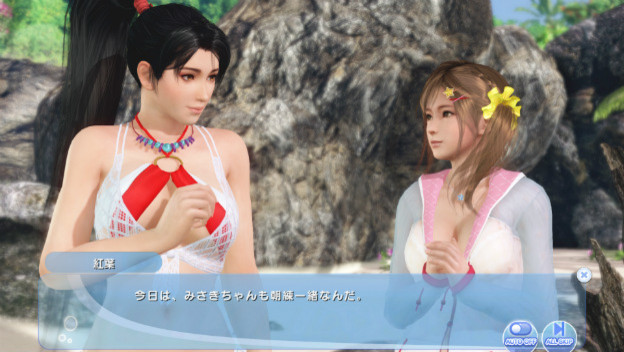Yep, we’re going there. A “new” Dead or Alive Xtreme game is coming out, somehow. I could sit here and rag on the game like everyone else, but that won’t do anyone, especially myself, any good. Instead, we can use this as an opportunity to think about how this specific kind of game can survive as long as it has. One could argue that it isn’t really in as great standing as it seems. The series was largely laughed out of the western market, and it doesn’t exactly do huge numbers in Japan either. But it’s still going, and the reason why can’t really be boiled down to a singular reason. Sure, sex sort of sells, but that didn’t save the series in the west. What’s really key here is a combination of brand power, cultural differences, and controversy.
Dead or Alive , despite its niche status, is still a brand with undeniable brand power. It’s no Street Fighter or Mortal Kombat , but the series lives on to this day. As a publishing and development house, Koei Tecmo is very good at securing niche demographics and consistently feeding them content. You see this enduring quality with other franchises as well, including Dynasty Warriors , the Atelier RPGs, and even Nobunaga’s Ambition . Dead or Alive may not be as prevalent as it used to be, but the most recent entry still made its mark.
Let’s look at Dead or Alive 5 . That game was released in several versions, which is something you can only justify if people are playing your game. In fact, the life span of Dead or Alive 5 spans from 2012 to 2016, when the most recent version was updated to include a guest character, Mai Shiranui from SNK’s King of Fighters series. A free to play version, which of course included upgrade packages for real money, has seen over 9 million downloads.
The Dead or Alive Xtreme series has been less fortunate. The first game released to oddly high reviews in 2003 and performed well enough in both markets to warrant sequels. The unexpected depth to the game’s collectible systems drew curious parties in, and the cultural context of 2003 made the whole shtick work better than expected. Things did not go so well the second time around. Even with all the sexy marketing, Dead or Alive Xtreme 2 not only sold poorly, but it was ravaged in reviews. The novel appeal of the first game vanished. Or, perhaps, the industry had started to grow up a little.
This was also a time when Japanese games were struggling. Even industry standards like JRPGs and crazy action games had a hard time adapting to the HD era, and factors like economic recession made things even more sink or swim. Sex wasn’t enough, and the Dead or Alive brand was was really kept things afloat. Case in point: BMX XXX . That game was even more of a big deal in terms of “video game has sexy stuff?” media frenzy. It bombed. The game was okay at best, but more crucially it lost its professional sponsorship and brand power along the way. This was a death sentence. Now imagine an “extreme beach volleyball” on the shelf sans Dead or Alive . There’s probably a reason the sequel dropped the volleyball part entirely.
Part three, making the leap to the PlayStation 4 and Vita, didn’t even come out in the west. Koei Tecmo and Sony knew not to even bother. Shuhei Yoshida chalked it up to cultural differences, which caused a bunch of fake internet controversy with the GamerGate crowd. Online retailer Play-Asia saw and seized an opportunity, and an English localization proved serendipitous. It was one of Play-Asia’s most pre-ordered games ever, and the game shipped around 190,000 copies overall in its first month. That’s somewhat high for a small niche, and the game sold roughly 60,000 copies in its first week.

Now, Koei Tecmo is porting the third Dead or Alive Xtreme to PC, making it a browser-based, free-to-play title using a game-streaming platform. Based on those circumstances alone, it’s hard to imagine anyone considering a localization this time around. It’s a niche series with a niche audience, and the game – largely menu-based and only slightly interactive – is probably not expensive to make in the first place.
The bottom line is this: when you look at the numbers, the Dead or Alive Xtreme series is surviving, but not thriving. It took a manufactured controversy to get people to pay more than a passing glance at the most recent title, and this new version is a free-to-play PC port on a novelty service platform designed to try to squeeze a few more pennies out of its small audience. Dead or Alive is the real brand, and even that is a niche compared to the competition. The series has its own valuable and weird history in video games, but even then it’s hard to argue that sexy marketing does anyone in games any favors unless there’s something else paired with it. Ultimately, you still have to make a good game that people want to play, the right people talking about it, and the right branding on the box.
